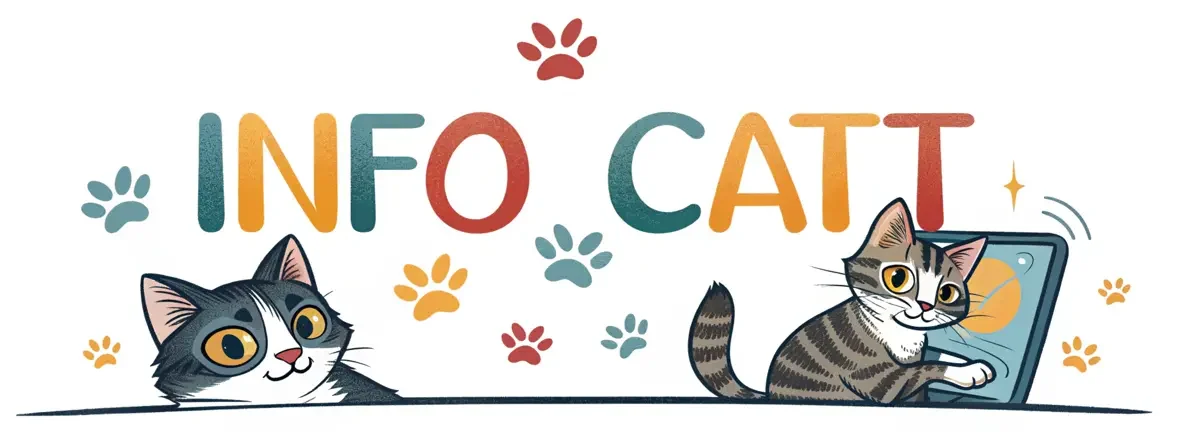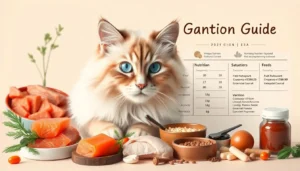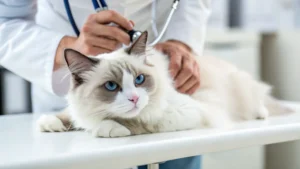When I first brought home my Ragdoll cat, I had no idea how special they would become. Their stunning blue eyes and silky coat were just the start of an amazing journey. It was a journey into understanding these gentle giants of the feline world.
This cats are more than just beautiful companions. They are a unique breed that needs special care and attention. If you’re thinking of getting a Ragdoll Breed Cat, it’s important to know their specific needs and what makes them different from other cats.
This guide will help you understand how to give your Ragdoll cat the best care. We’ll cover nutrition, grooming, health management, and emotional bonding. We’ll share the key strategies to make sure your feline friend is happy and healthy.
Understanding the Ragdoll Cat Breed Origins and Characteristics
This cats have a unique history that wins the hearts of many. They are known for their special traits. Their story started in the 1960s in California.
The Ragdoll cat’s origins are as captivating as their personality. Ann Baker, a breeder in Riverside, California, created them. They got their name because they go limp when held, like a soft doll.
👉 The Fascinating Breed History
This Type Of cats have a unique background. Their breeding focused on certain traits:
- Developed in the 1960s by Ann Baker
- Originated from a white Persian-type cat named Josephine
- Selectively bred for gentle ragdoll cat behavior
👉 Distinctive Physical Features
Ragdoll Breed cats have amazing physical traits. They are known for:
- Large, muscular body
- Semi-long hair coat
- Striking blue eyes
- Distinctive point coloration
👉 Color Patterns and Variations
Breed Ragdoll have a wide range of color patterns. Their coat variations include:
- Seal point
- Blue point
- Chocolate point
- Lilac point
These cats are not just beautiful but also very gentle. Their personality makes them perfect for families. They form strong bonds with people. If you want a cuddly cat or a loving family pet, Ragdolls are a great choice.
Essential Personality Traits of Your Ragdoll Companion
This Breed Of cats are known for their special and loving nature. They are gentle giants, perfect for families and individuals. Their calm and affectionate personality makes them stand out.
These cats form strong bonds with their human families. When you hold a Ragdoll, they go limp, showing their love for relaxation.
- Exceptionally docile and calm temperament
- Strong desire for human interaction
- Intelligent and easily trainable
- Adaptable to various living environments
Your Ragdoll will follow you everywhere, showing their social side. They love being around people and are not aloof. Their playful yet gentle nature makes them great with kids and other pets.
“A Ragdoll is more than a pet – they’re a furry family member who wants to be part of everything you do.”
Ragdoll’s can sense human emotions and offer comfort when needed. They are quiet and easy-going, fitting well into different homes.
Despite their size, Ragdolls are gentle and patient. They enjoy playing but also love to just sit with you. This makes them perfect for any home, whether it’s busy or quiet.
If you love fluffy and affectionate cats, Ragdolls are a great choice. However, if you prefer a cat with a more independent yet playful personality, check out the Forest Norwegian Cat!
Creating the Perfect Living Space for Your Ragdoll
Creating a cozy and engaging space is key for your ragdoll cat’s joy and health. These big cats love being indoors where they can play and get attention. It’s not just about making it look good—it’s about meeting their special needs.
Your ragdoll needs a special area that matches their playful and loving nature. Focus on making a space that’s comfy, safe, and full of things to do.
👉 Indoor Environment Setup
Setting up your home for a ragdoll cat involves a few important things:
- Soft, elevated perches near windows
- Quiet resting areas away from busy spots
- Spaces with the right temperature
- Cozy hiding spots
👉 Essential Accessories and Toys
Ragdoll enjoy playing and solving puzzles. Get them toys and accessories that keep them busy:
- Scratching posts with different textures
- Puzzle feeders to test their smarts
- Feather wands and laser toys for fun
- Soft beds with edges
👉 Safety Considerations
“A safe home is a happy home for your ragdoll cat.” – Feline Experts
To keep your ragdoll safe, make sure your home is free from dangers by:
- Securing loose electrical cords
- Removing toxic plants
- Installing strong cat trees
- Creating safe windows
With careful planning, you can make a home that’s perfect for your ragdoll cat’s needs.
Nutrition Guidelines for a Healthy Ragdoll Breed Cat
Choosing the right food for your Ragdoll Breed is key to their health. Their diet helps keep their muscles strong and their coat shiny. Unlike other cats, Ragdolls need a special diet that meets their needs.
Look for high-quality protein in their food. This helps keep their muscles lean. Since Ragdolls are big, they need more food than smaller cats.
- Choose protein-rich foods with real meat as the first ingredient
- Opt for balanced wet and dry food combinations
- Control portion sizes to prevent obesity
- Select foods with added nutrients for coat health
It’s important to consider your Ragdoll’s age when picking their food. Kittens, adults, and seniors have different needs. Premium cat foods formulated for large breed cats can help meet these needs.
Be aware of food sensitivities in Ragdolls. Some may need special diets. Always talk to your vet to make sure you’re feeding your cat the right food.
Mastering Ragdoll Cat Grooming Techniques
Grooming your Ragdoll is key to their health and happiness. These cats have long, soft hair that needs regular care. Learning the right grooming techniques will make your Ragdoll look great and strengthen your bond.
Start with the right tools and a regular grooming routine. Your Ragdoll will love the gentle, consistent care that keeps their coat shiny.
👉 Brushing and Coat Maintenance
Brushing your Ragdoll’s coat is vital for their fur. Here are some tips for effective grooming:
- Use a wide-toothed metal comb or soft-bristled brush
- Brush 2-3 times per week to prevent tangles
- Focus on areas prone to matting like belly and hindquarters
- Be gentle and make brushing a positive experience
👉 Nail Care and Bathing Tips
Ragdolls are usually calm during grooming, making nail trimming and baths easier. Trim their nails every 2-3 weeks. Bathe them only when needed, using cat-specific shampoo.
👉 Managing Seasonal Shedding
Seasonal shedding in Ragdolls can be managed with regular grooming. During heavy shedding, brush more often to:
- Remove loose fur
- Prevent hairballs
- Reduce fur around your home
- Distribute natural oils through the coat
Pro tip: Regular grooming helps you check for any skin issues or abnormalities early on.
Health Management and Preventive Care
Keeping your Ragdoll healthy means being proactive. Regular vet visits and watching your cat closely are key. This way, you can spot problems early and keep your cat well for a long time.
Begin with a solid health plan. This should include:
- Annual vet exams
- Current vaccinations
- Preventing parasites
- Cleaning your cat’s teeth
It’s also important to get specific tests for Your Breed Ragdoll . Your vet might suggest:
- Checking the heart
- Screening for kidney issues
- Looking for genetic problems
Spaying or neutering is also vital. It helps prevent some cancers and stops unwanted behaviors. Regular health checks at home can help catch issues before they get worse.
Early detection is the key to managing your Ragdoll’s health effectively.
Make a routine for checking your cat’s health. Look at their coat, eyes, ears, and body. Also, watch for changes in behavior, appetite, or energy. These signs can mean there’s a health problem.
Training Your Ragdoll: Methods and Best Practices
Ragdoll cat training needs patience, consistency, and knowing their personality. These cats are smart and love to please, making them great at learning. Use positive methods and gentle guidance when training them.
Training a Ragdoll can be very rewarding. It’s important to understand their needs and traits. Their adaptability makes them perfect for many training methods.
👉 Litter Box Training
Litter box training for Ragdolls usually comes easily. Follow these steps for success:
- Choose a large, clean litter box with low sides
- Place the box in a quiet, easy-to-reach spot
- Use unscented, soft litter that feels good
- Clean the box often to keep it clean
👉 Socialization Tips
Socializing your Ragdoll is key for a happy pet. Start early with:
- Introducing them to different people and places
- Using calm, gentle interactions
- Offering treats during new experiences
- Creating positive feelings towards new things
👉 Command Training Basics
Ragdolls can learn basic commands with consistent, reward-based training. Clicker training is great for them. Keep training sessions short and fun.
“Patience and positive reinforcement are the keys to successful ragdoll cat training.” – Feline Behavior Experts
Remember, every Ragdoll is different. Tailor your training to fit your cat’s unique personality and learning style.
Common Health Issues in Ragdoll Breed
Ragdoll’s are usually healthy, but they can face certain health problems. It’s important for owners to know about these issues. This knowledge helps in providing better care and catching health problems early.
Genetic health conditions are a big concern for Ragdoll cats. Some common health issues include:
- Hypertrophic Cardiomyopathy (HCM): A heart condition that affects many Ragdoll cats
- Polycystic Kidney Disease (PKD)
- Bladder stones and urinary tract complications
- Dental problems
Regular vet visits are key to spotting these health issues early. Your Ragdoll’s size might hide health problems, so regular check-ups are vital.
Look out for signs like:
- Changes in eating habits
- Unusual lethargy
- Difficulty breathing
- Changes in bathroom behaviors
Early detection and proactive healthcare can significantly improve your Ragdoll’s quality of life.
Genetic testing and careful breeding can lower the risk of inherited health issues. Work with your vet to create a health monitoring plan for your cat.
Exercise and Physical Activity Requirements
Ragdoll Breed are known for being laid-back, but they still need exercise. This keeps them healthy and mentally sharp. These cats enjoy playing, even though they seem relaxed.
It’s not hard to keep your ragdoll active. Even indoors, there are many ways to keep them engaged.
👉 Creative Indoor Exercise Ideas
- Install cat trees with multiple levels for climbing
- Use interactive puzzle feeders to stimulate mental engagement
- Rotate toys to maintain interest in ragdoll cat behavior patterns
- Create obstacle courses using cardboard boxes and tunnels
👉 Engaging Play Sessions
Play is key for your ragdoll’s happiness. Short play sessions keep them active and prevent boredom. Try these:
- Feather wands that mimic hunting movements
- Laser pointers for chasing
- Crinkly toys that spark curiosity
Pro tip: Aim for 10-15 minutes of active play twice daily to keep your ragdoll cat healthy and happy.
Bonding with Your Ragdoll: Social Needs and Interaction
Ragdoll Breed are known for their amazing social nature. They love being around people and form strong bonds with their owners. Knowing about their personality helps make a great relationship for both you and your cat.
Your Ragdoll will always want to be with you. They like to follow you everywhere. Unlike some cats, Ragdolls don’t like to be alone and want to be part of your life.
- Create daily interaction routines
- Provide gentle physical affection
- Engage in consistent playtime
- Speak softly and reassuringly
To get closer to your Ragdoll, try these tips:
- Lap time: Ragdolls enjoy sitting next to their owners
- Gentle brushing: Builds trust and connection
- Interactive toys: Keep their mind and body active
Patience and consistent attention are key to developing a deep relationship with your Ragdoll companion.
Watch how your cat acts. If they purr, relax, or want to touch you, they’re happy. These signs show they’re feeling good and need your attention.
Long-term Care and Life Stage Considerations
Knowing how long a ragdoll cat lives is key to giving them the best care. These cats usually live between 12 to 17 years. They need different care as they get older.
Every stage of a ragdoll cat’s life requires special care. When they’re kittens, focus on:
- Healthy eating habits
- Regular vet visits
- Getting them used to people
Adult ragdoll need consistent care. Keeping a steady routine is important for their health and happiness. Make sure to:
- Feed them right
- Keep them active
- Keep their minds busy
When your ragdoll gets older, you’ll need to make some changes. To help them live longer, consider:
- Changing their diet
- Exercising them gently
- Going to the vet more often
- Making their home more comfortable
Good healthcare is vital for your ragdoll at every stage. Regular vet visits can catch health problems early. This ensures your cat stays happy and healthy.
Conclusion
Owning a Ragdoll Breed is more than just having a pet. It’s about creating a deep, meaningful connection with a special companion. These gentle giants need dedicated care that goes beyond basic maintenance.
They demand your attention, love, and understanding of their unique breed characteristics. Your commitment to their care will impact their quality of life. Optimal nutrition, comprehensive healthcare, and thoughtful grooming are key.
Each aspect of care is crucial for your Ragdoll cat’s health and happiness. From the right diet to maintaining their luxurious coat, it all matters. Creating a stimulating environment is also important.
The journey with a Ragdoll cat is filled with joy and companionship. By following the insights and strategies in this guide, you’ll build a strong bond. This bond will transform your relationship into a lifelong companionship.
Your investment in understanding and meeting their needs will be rewarded. You’ll get unconditional love and companionship from these remarkable cats.
Remember, every Ragdoll is unique with its own personality and needs. Patience, observation, and continued learning are essential. They will help you navigate the world of Ragdoll cat ownership with confidence and compassion.
FAQ
Are Ragdoll cats good for first-time cat owners?
Yes, Ragdoll’s are perfect for beginners. They are calm and loving, making them easy to care for. They get along well with people and are great for families.
How much grooming do Ragdoll cats require?
Ragdolls need regular grooming because of their long hair. Brush them 2-3 times a week to avoid tangles and reduce shedding. During the seasons, you might need to brush them every day. This keeps their fur looking good and prevents hairballs.
What are the typical health issues in Ragdoll cats?
Ragdolls can face health problems such as heart disease and kidney disease. They might also get bladder stones and joint issues. Regular vet visits and a healthy diet can help prevent these issues.
What type of diet is best for a Ragdoll cat?
Ragdolls need a diet rich in protein to keep their muscles and coat healthy. Choose foods with real meat as the first ingredient. Watch their weight and use both wet and dry foods for a balanced diet.
Do Ragdoll cats get along with other pets?
Ragdolls are friendly and can get along with other pets. They are good with dogs and cats. Introduce them slowly and give each pet their own space.
How much exercise do Ragdoll cats need?
Ragdolls need playtime to stay healthy. Play with them for 10-15 minutes, 2-3 times a day. Use toys that make them think they’re hunting. This keeps them active and smart.
What is the typical lifespan of a Ragdoll cat?
Ragdolls can live 12 to 17 years with good care. Diet, exercise, and health checks are important. Indoor cats live longer because they face fewer dangers.
Are Ragdoll cats expensive to maintain?
Ragdolls can cost a bit more to keep. They cost between 0 to ,000 to buy. You’ll also spend on food, grooming, vet visits, and health checks. Plan for these costs to keep your Ragdoll happy and healthy.



